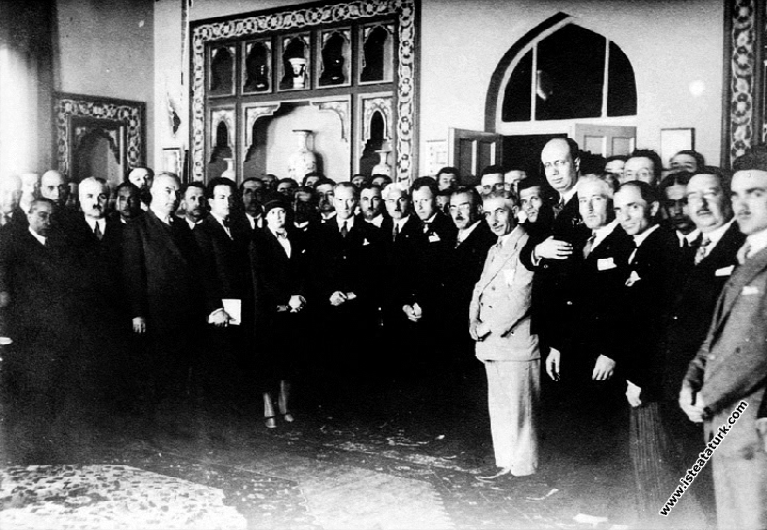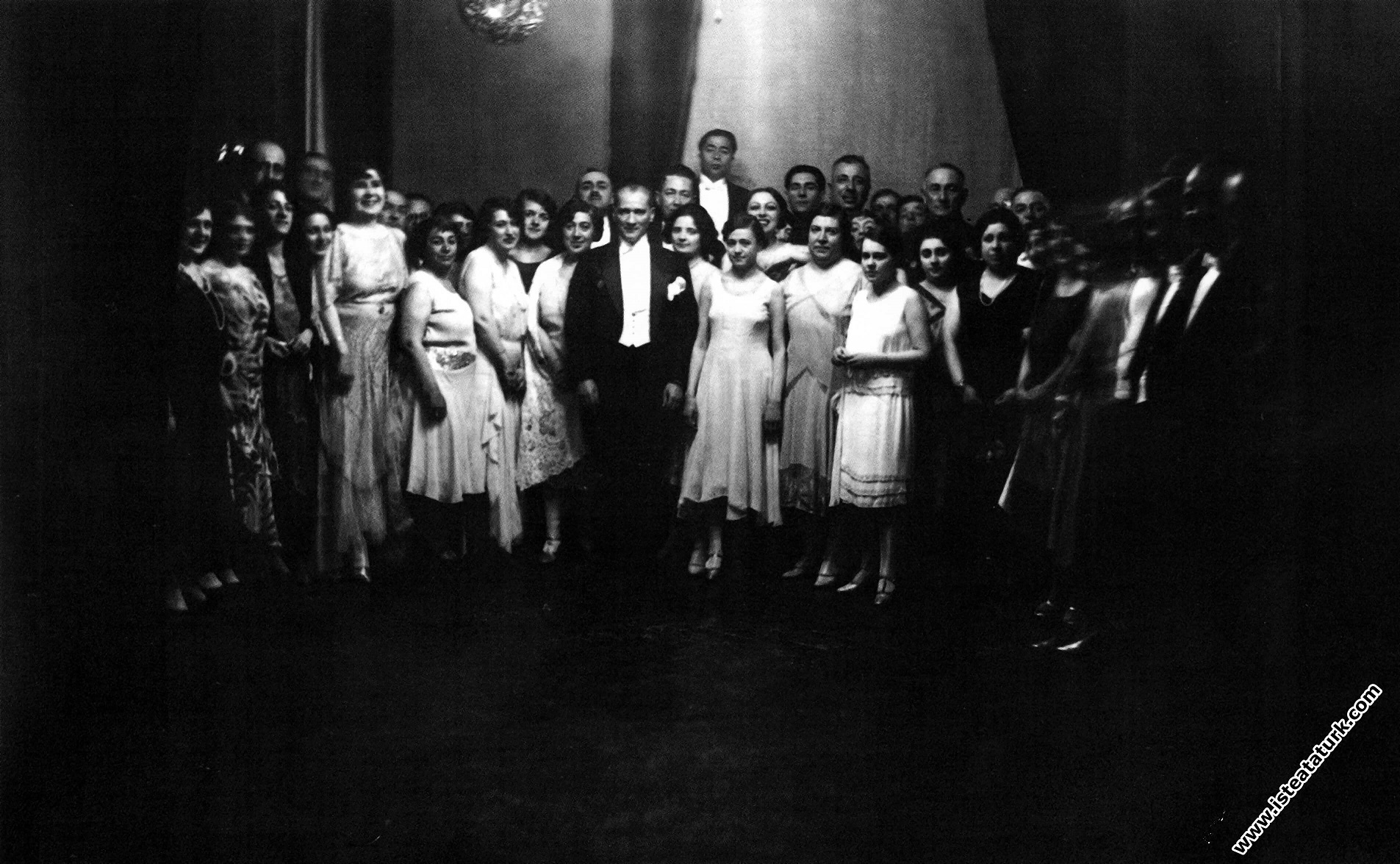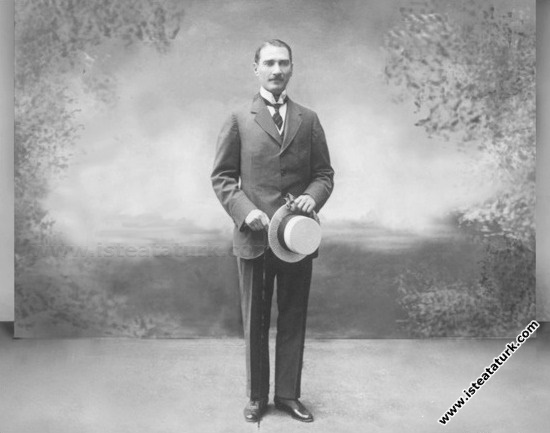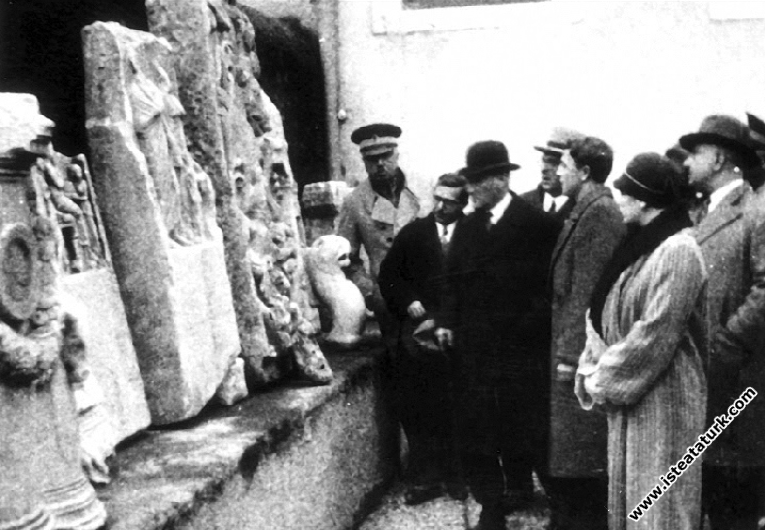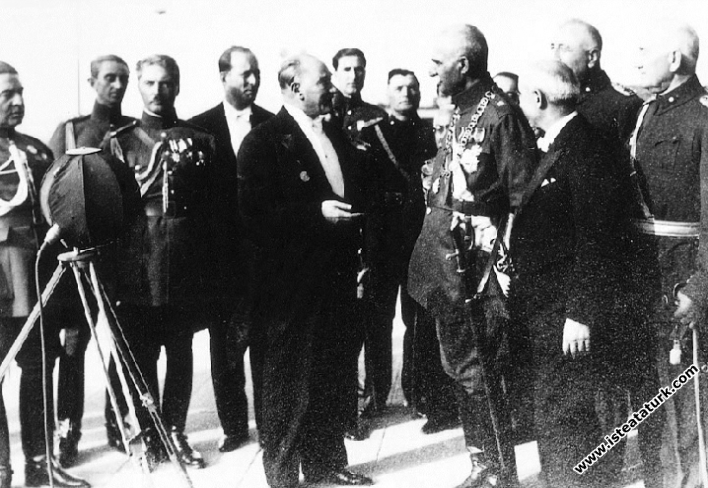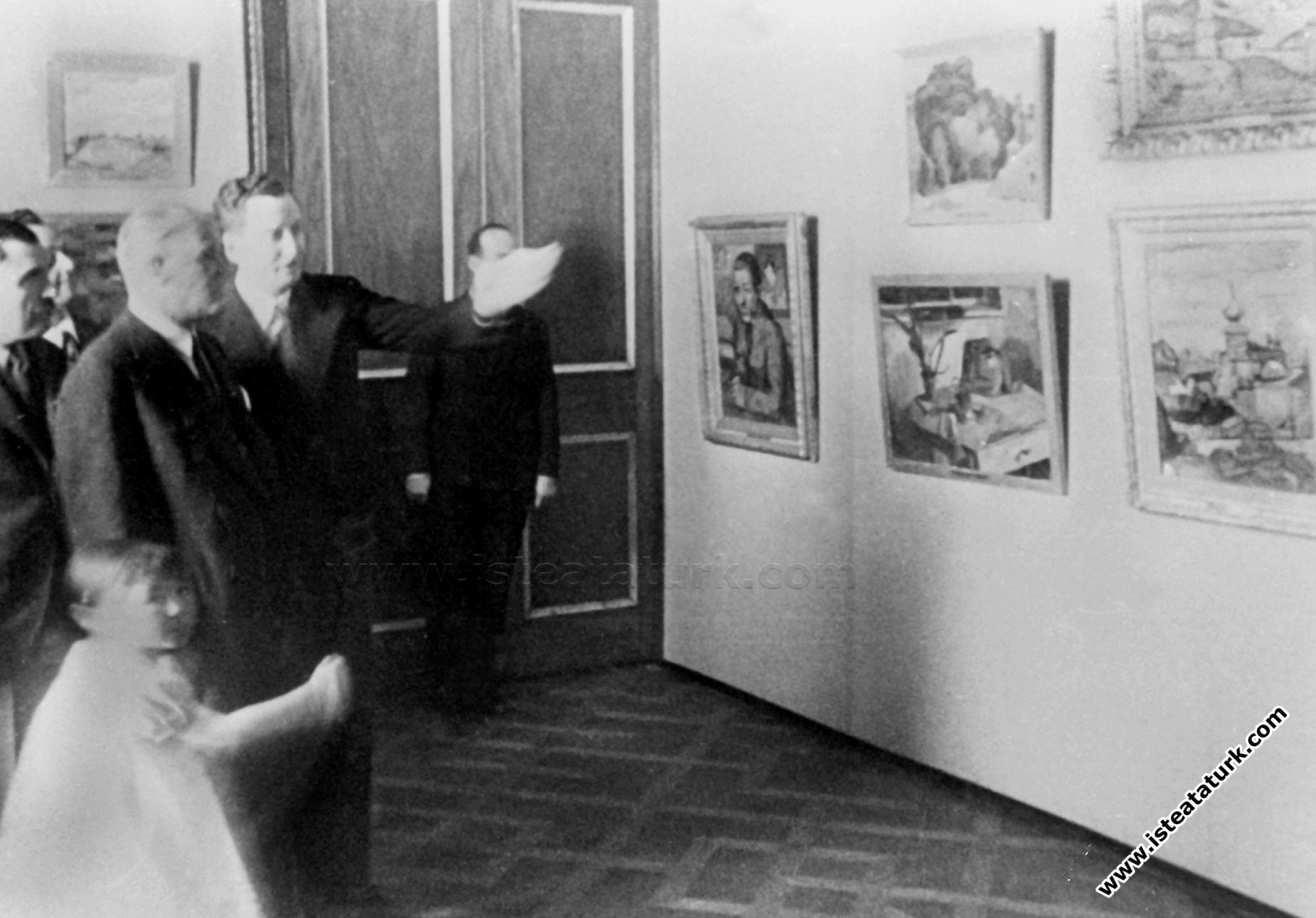
Atatürk, Art, Artist and Painting
Character Size
Atatürk, Art, Artist and Painting
ATATÜRK, ART, ARTIST AND ART
Man is a civilized creature as well as a political creature. The work of man as a political creature is the State, the work of his civilized feelings is art. The concepts of state and art are not closed to each other. Because the common source, foundation and ideal of both are related to the society. Art takes its truth from the conscience of the society and works to glorify it in the direction of the same ideal, without losing its connection with the society.
While Atatürk brought modern state organizations to the new Turkish state, he brought a new humor and opened a new way for the new Turkish art to develop and progress in a contemporary sense. Atatürk, like an artist, has a fine spirit; He has a creative imagination and his heart is open to human feelings. These features dominate their thoughts and feelings. There is no blasphemy, insult or slander to others in His Great Speech and other statements. He hates lying and prides himself on not having lied.
The spirit and thought that dominated Atatürk's development of the new Turkey, like the idea of art, has a universal effect.
On the other hand, he sees the fine arts as a part of the educational, scientific and cultural revolution and always repeats it1. For this reason, he sees the principle of secularism as closely related to art, especially painting and sculpture, therefore he believes that it is necessary to develop in these two branches of art, and in this context, he emphasizes the prohibition of depiction in Islam and states that there was no such prohibition, and that the ideas brought to prevent idol worship in the first years of Islam were wrong. 2. As a result of this approach, the radical changes observed in the art life took place in the wide-ranging event called the Atatürk Revolution. For this reason, it is necessary to see the initiatives in the field of literature, painting, sculpture and music within the scope of the cultural revolution. At this point, we take here some of Ferit Celâl Güven's observations on Atatürk's view of art and artist, based on what he wrote in October 1938: “... He used to explain the fine arts to us as the master of the souls, as a great tutor. He called the artist and art to the service of the revolution, and the armies to the service of the country. He created a thousand kinds of bedia on the Turkish homeland that could be the subject of artists for centuries. If the Turkish artist can faithfully imitate these bedia, these dizzying subjects, he may have paid what was expected of him.... In his eyes, art; it was the art that ramped up and did what it wanted to inculcate without fear, without hesitation. He sought joy, freshness, greatness, and courage in art, and did not value art that did not know how to activate the collective emotions of the masses.
Atatürk's interest in art and in the meantime painting goes back to his student years. We quote a quote from Kinross regarding this issue: “... Ali became friends with Fuat. They decided to spend a weekend in Büyükada during the summer season. They were going to camp in the pine groves because the hotels were expensive. The surrounding natural beauties, the fragrant pine groves, the sparkling sea, the starry sky made them ecstatic. If I had stayed in Harbiye, I wouldn't have been trapped between four walls... I would have started painting as soon as dawn broke." 4
What did the artist mean to Atatürk? In other words, how should an artist be according to Atatürk? Here are some words about it:
“An artist is the first person to feel the light on his forehead after long struggles and efforts in the community.” (1923)
"You can all be MPs. You can be a deputy or even a president. But you cannot be an artist." (1930)
With these words, he states that art is based on the power of creation and that this is innate as a gift from God.
"With my greetings and respect, I request you to convey to the members of the society that I am always appreciative of the continuous and enlightened work of our artists." (1923) Both these words and "The artist does not kiss the hand, the hand of the artist is kissed." (1930) was clearly a sign of respect for the artist. Describing the artist as a constantly working, very productive and respected person, Atatürk regarded fine arts as a historical feature of the Turkish nation, emphasizing that art has a vital feature and characterizing it as a national ideal. In the meantime, for the subjects that the artists would cover, he pointed to the inexhaustible national art treasures, the periods of our near and far history.
While describing art as the expression of beauty, he attributes the formation of a certain place on the path of progress of nations to their painting and sculpture, to the application of the techniques required, and to the maturation of people as a result. He also expresses the position of fine arts in revolutions as follows;
“Success in fine arts is the most conclusive proof of the success of all revolutions. What a pity for the nations that are not successful in this. Despite all their achievements, they will always be deprived of being recognized as a high human being in the field of civilization.
He also included fine arts in his speech in the tenth year of the Republic. In this speech, he described the Turkish nation as a high society of people, pointing out that there is a love of fine arts and advancement in it among its historical characteristics.
On September 20, 1937, Turkey got its first picture gallery after it was opened by Atatürk7. He addresses the artists as follows on the occasion of the opening of the gallery. “... If a Turk's hand works, sees the beautiful, and is emotionally excited, he will show the powers that will give examples and masterpieces not only to his own nation, but also to the culture of the world.”8 As it can be seen, Atatürk, as in the quotations above, is the one that stands out in this quote. The issue was how important the fine arts would function in both Turkish culture and world civilization.
There is little evidence to suggest that Atatürk stopped for pictures. For example, painter İbrahim Çallı “Would you allow me to paint the portrait of Mustafa Kemal in the hearts of the Turkish nation, my pasha?” When she asks him, “since you want to draw Mustafa Kemal, who lives in our hearts, there is no need for me to be a model” 9, he answers. Although a portrait of Çallı was commissioned, it is not clear whether he stopped or not.
Mihri Müşfik Hanım, who made her favorite portrait of İbrahim Çallı, whom she calls “this high artist”, among the painters she was close to and even invited to her “table”. It shows Gazi standing in his cloak, his eyes shining with the light coming from the left. The painting is a full-length portrait. However, it is unclear whether Atatürk stopped for this painting. However, a portrait of him to a foreign artist was ordered by the government at that time. Gazi stopped by this painter for a while. It is stated that the portrait is not exactly similar to some of the guests. In the face of these views, Atatürk said, “It may be, but would you believe this portrait was very similar to me for a while. But the master did not know how to stop. Craftsmen should know how to stand like commanders. Otherwise,
Another point that Atatürk could not stand, who said "I cannot tolerate the ugly"12, is the misinterpretation of heroism in painting. Annoying him, the painting shows the Mehmetçi stabbing his bayonet into the chest of a Greek lying on the ground. The painting was sent to Çankaya by an acquaintance. This person who says, "I can't look at blood. I can't bear to see even a chicken being slaughtered," hurts because the picture he looks at makes the Mehmetçi smaller. “Close and remove this, what a disgusting sight, I will be surprised at the distraught mind of the sender” 13.
With the establishment of the Republic, it is seen that Turkish painters showed a sincere adaptation to the new state philosophy and gave their works in this direction. The efforts to establish national consciousness and the efforts to create the social and cultural institutions required by a modern state, in a way, enlightened the path of the Turkish artist. In the compositions of Atatürk and the War of Independence made in the 1930s, the effort to reflect the subject with symbolic and allegorical aspects predominates. In such paintings, the figure of Atatürk forms the central weight of the painting, villagers and urban people surround him, and interpretations emphasizing that the passion for independence is shared by the nation are given priority. In these paintings, enthusiasm, joy, is an unchanging happiness brought about by being surrounded by the great leader. Almost all, in their own way, this happiness, treated as the main activity of a composition. For example, due to its importance, all artists participated in the Tenth Year Revolution Exhibition organized by Ankara Community Center. In the exhibition, which Atatürk watched with interest and visited, the focus was mostly on the subjects related to the revolutions and Atatürk portraits.
Sending artists to Europe in 1924, those returning from Europe trying to lay the foundations of modern painting by establishing the Independent Painters and Sculptors Union, which is considered an extension of the New Painting Society, the establishment of the "D Group" in 1933, the "Homeland" for painters in the same year. The organization of the AR General Directorate, which was established in the 1930s and whose purpose was to “execute and spread all works in the field of art in accordance with the national ideal, to raise and exalt the nation in this direction”, and to create the AR General Directorate, which is important in terms of fine arts and culture. The publication of the magazine, the organization of exhibitions in various cities, especially in Ankara and Istanbul, are the proofs of the conscious protection of art and painting in the Atatürk period.
NOTE: It was presented as a paper at the Fifth International Atatürk Congress held in Ankara on 08-12 December 2003.
1 Tayyib Gökbilgin, “Revolutionism as a Cultural Revolution in Turkish Society”, Cultural Revolution Under the Leadership of Atatürk, Regional Cooperation for Development (RCD) Seminar Proceedings (9-11 November 1967), Ankara 1972, p. 11th.
2 Gültekin Elibol, Atatürk and Painting and Sculpture, Istanbul 1973, pp.41-49.
3 Ferit Celâl Güven, “Fine Arts and Atatürk”, AR, Year2, Issue: 22-23, p.7.
4 Gültekin Elibol, supra, p. 10. For the record that Mustafa Kemal drew a picture on the bottom of the cigarette pack; Falih Rıfkı Atay, Çankaya, Istanbul 1984, p.3l.
5 Utkan Kocaturk, Ataturk's Ideas and Thoughts, Ankara 1984, p. 128.
6 Enver Ziya Karal, Thoughts from Atatürk, Ankara 1969, p.95 and Atatürk's Speeches and Statements, V.I1. Atatürk Research Center Publication. Ankara 1997, p.318.
7 Afet Inan, Memories and Documents About Ataturk, Ankara 1984, p. 173.
8 Disaster Inan, supra, p. Atatürk, who was late for the painting exhibition opened in 17.1936, called out to the Minister of Culture: "Can't you also show them (meaning the artists) and their efforts the necessary concern and interest?" S. Ziya Dağlı, “Atatürk and Art”, Journal of Social Sciences of the Faculty of Arts and Sciences, Isparta Issue: 1, 1995, p. 142.
9 Metin Toker, “Life of Retired Çalı”, Cumhuriyet, 13 July 1947, p.2
10 Mihri Müşfik Hanım was one of the first female painters and studied at the Fine Arts Academy in Paris and Rome, and when she returned home (1914) she became a teacher at the Istanbul Sanayi-i Nefise School. She had a very successful exhibition at the Maziroff Gallery in New York in 1928. Adnan Turani, “Atatürk and Fine Arts”, Atatürk Culture and Education Seminar (29 November 1982-Kayseri) Kayseri 1983, p.79.
11 Münir Hayri Egeli, Unknown Memories of Atatürk, Istanbul 1959, p.39 and Adnan Turani, net paper, p. 79.
12 Falih Rıfkı Atay, Çankaya, Vol: I, p.497.
13 Hasan Rıza Soyak, Atatürk's Characteristics, Istanbul 1964, p.24.
14 Esin Dal, "Understanding Atatürk", Atatürk and Painting, Ankara 1981, p. 130.
Latife Öztoprak
Source: ATATÜRK ARAŞTIRMA MERKEZİ DERGİSİ, Sayı 56, Cilt: XIX, Temmuz 2003, Türkiye Cumhuriyeti'nin 80. Yılı Özel Sayısı
